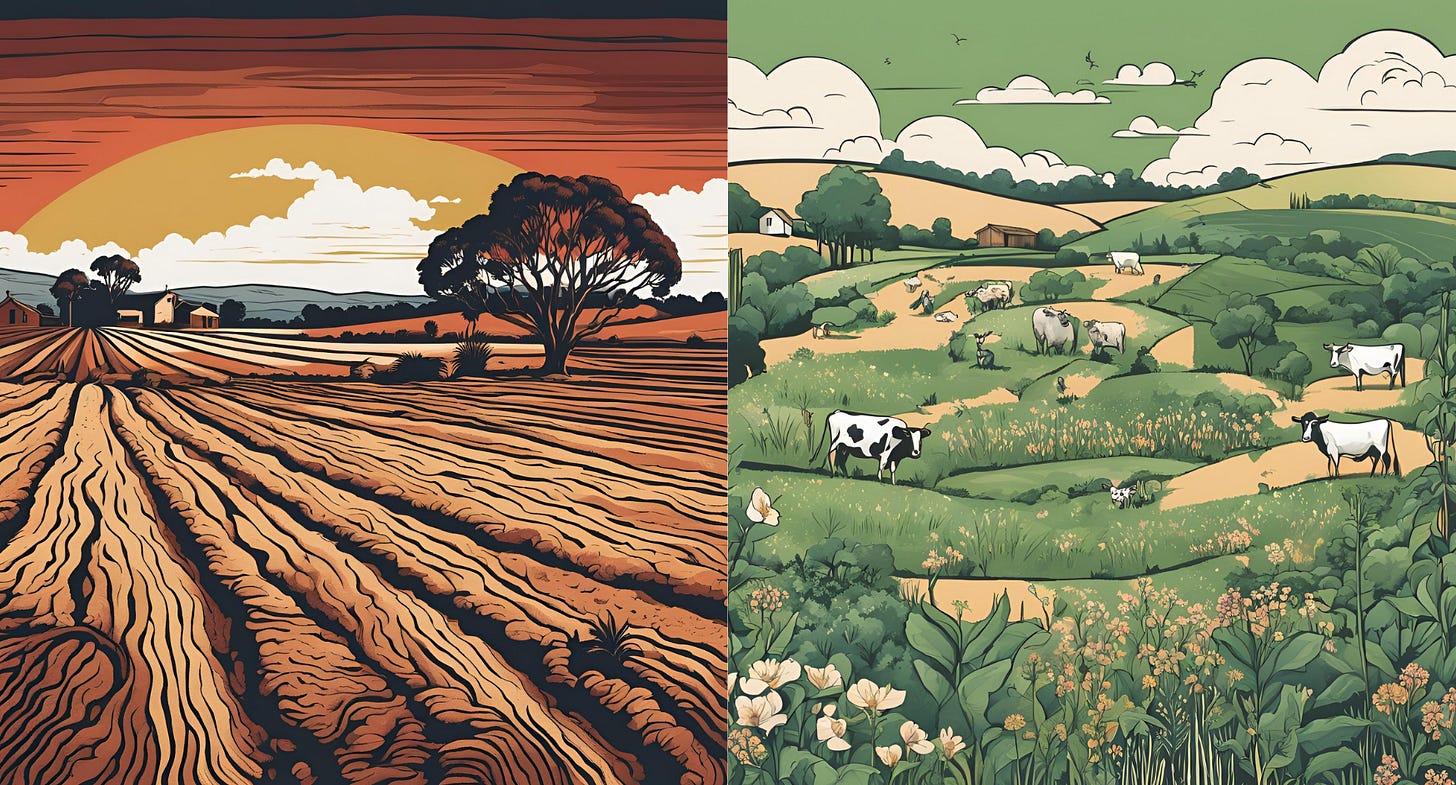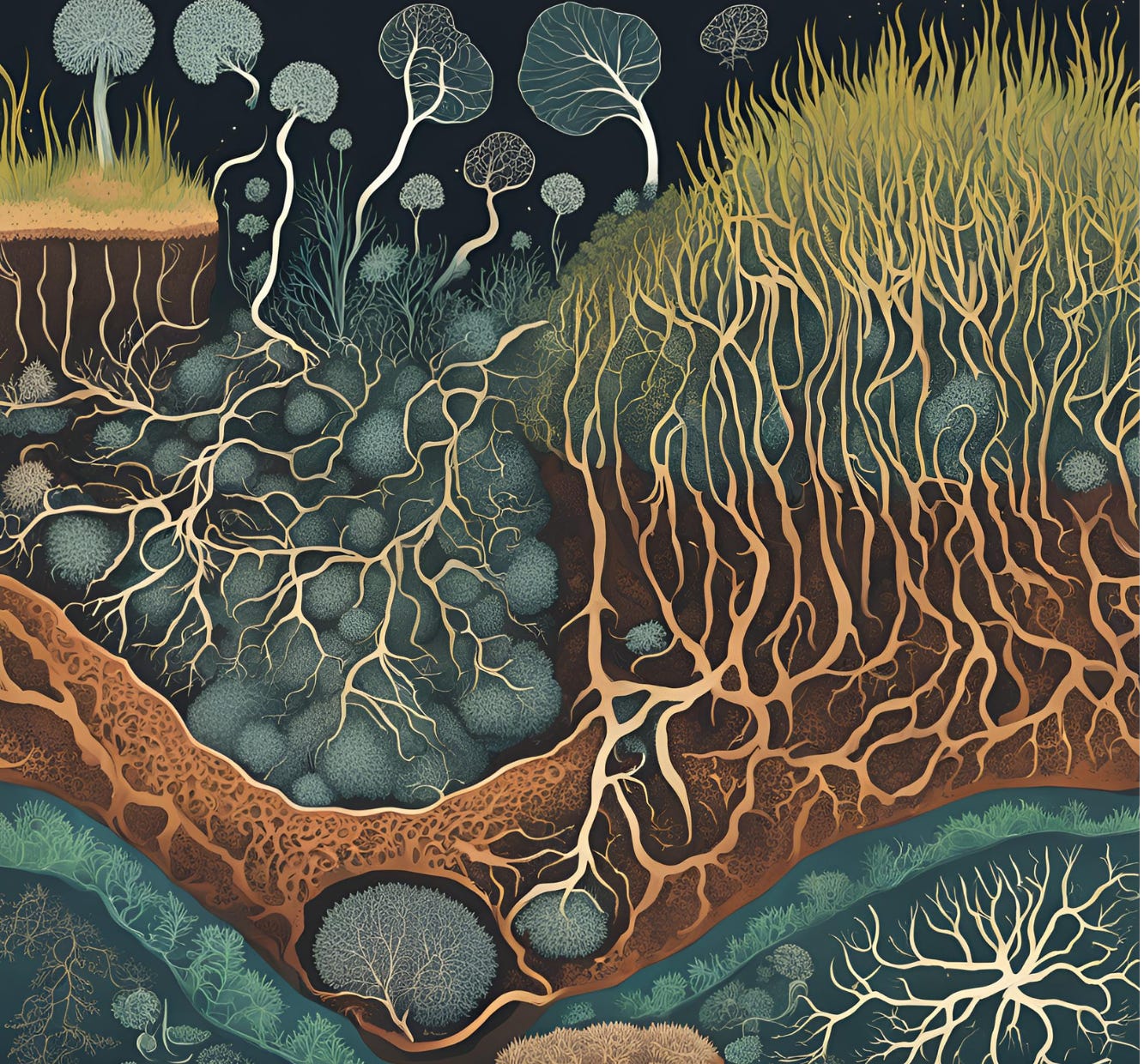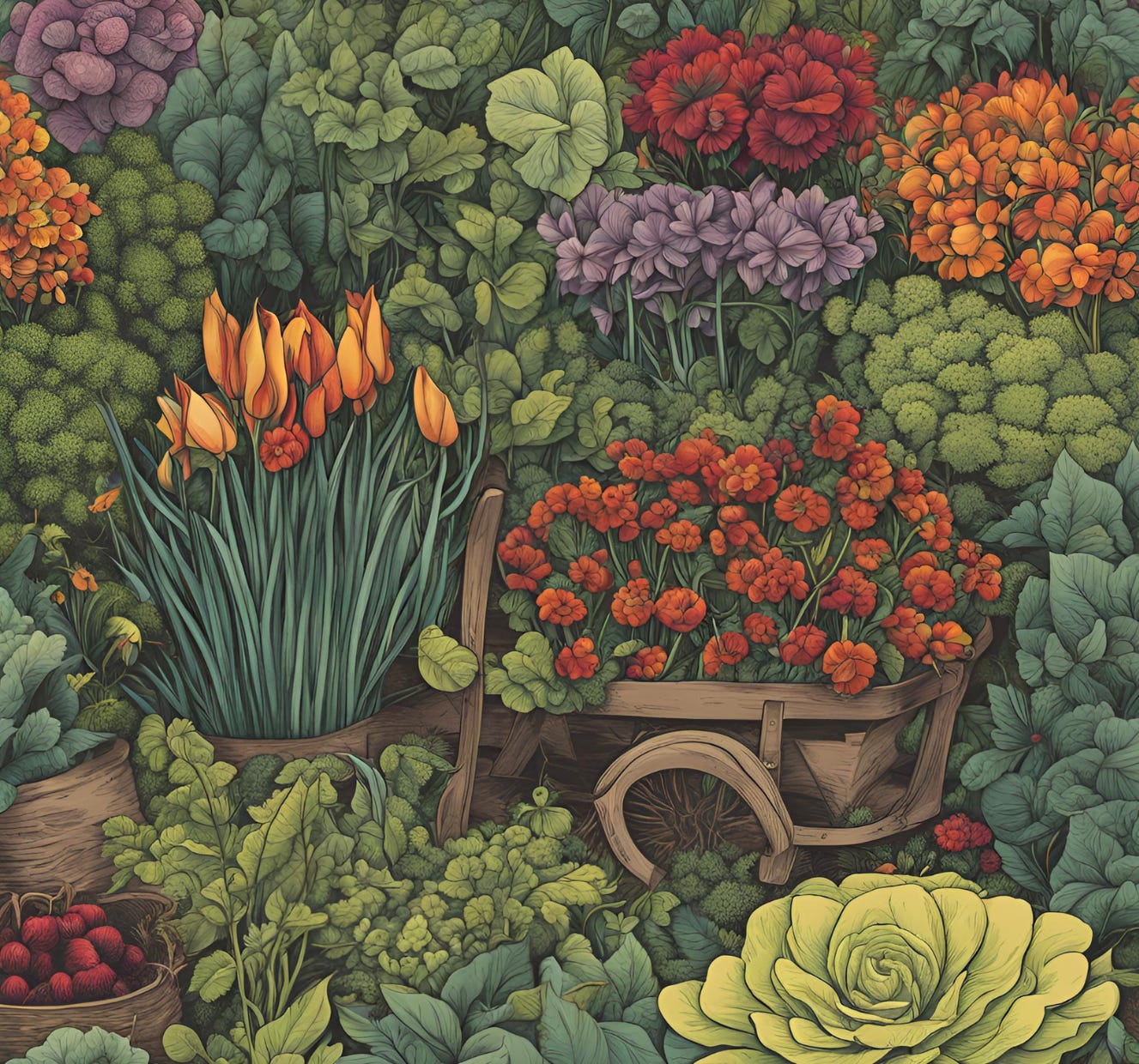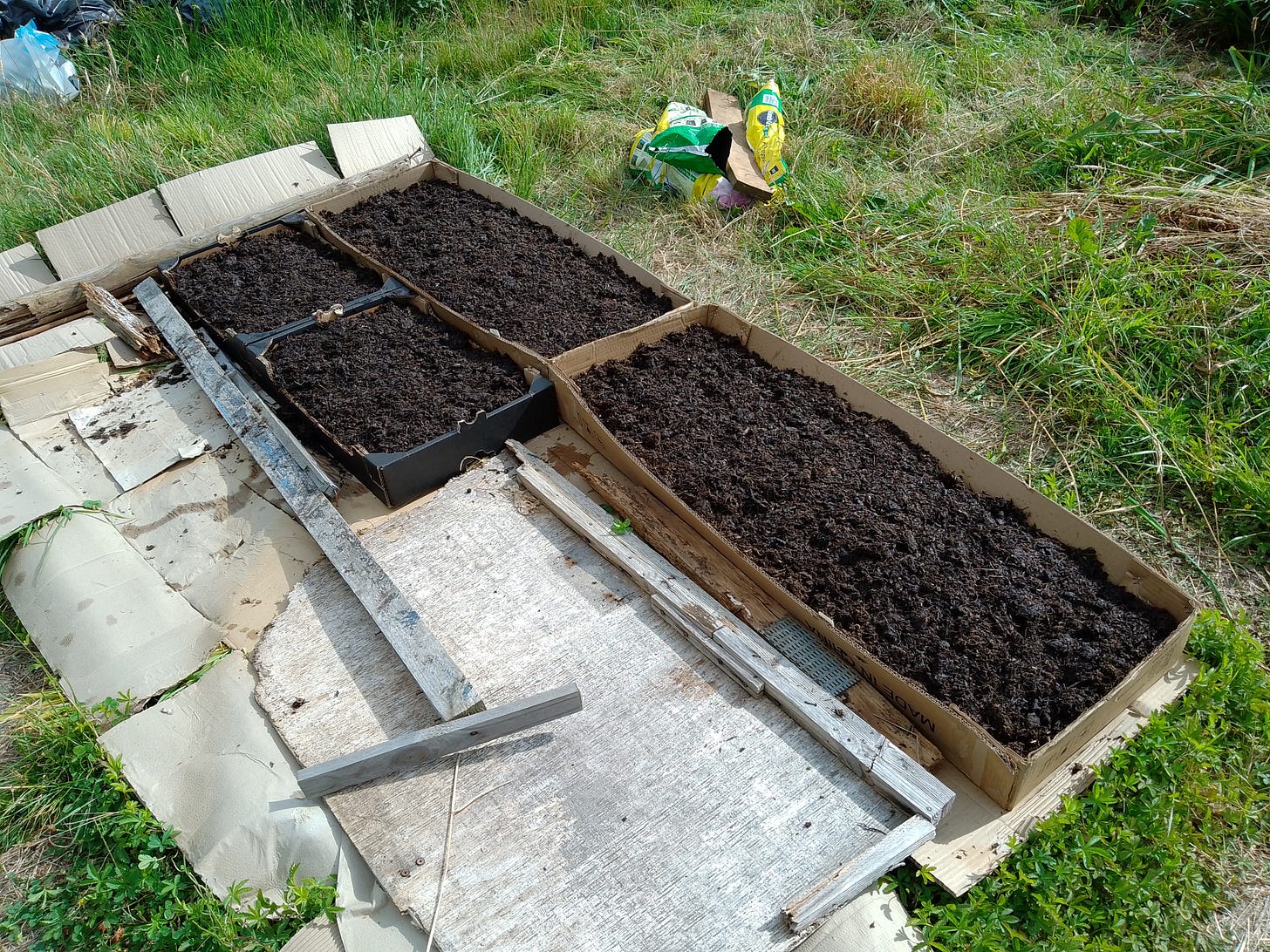#6. The Teeming Treasure Beneath Our Feet
The magic of soil. The holistic approach of regenerative farming - a paradigm shift in global agriculture. No-dig gardening and a plot update.
“The soil is the great connector of lives, the source and destination of all. It is the healer and restorer and resurrector, by which disease passes into health, age into youth, death into life. Without proper care for it we can have no community, because without proper care for it we can have no life.” Wendell Berry (Farmer, Poet, Environmental Activist)
Last week I talked about the documentary ‘Eating for Tomorrow’ and how the mass farming of Agribusiness is destroying our planet and our health. All a little pessimistic, I admit. However, I also mentioned how many farms are beginning to embrace the healthier option of regenerative farming. It’s a slow process but seems to be gaining momentum as the results increasingly prove it to be a viable solution.
This week I want to talk a little about the reasons for regenerative agriculture and the vital importance of healthy soil for a healthy planet and body.
The Holistic Approach
Have you noticed the trend this century towards more holistic ways of thinking? It’s lethargically gradual but I think the 21st century is going to be defined by its holistic approaches, not just in farming but in many areas of society where the entire system is considered rather than focusing on its individual components, especially in the sectors of education, health and medicine, work, technology, and urban planning.
And I’m all in for it.
One day, education will no longer be defined by subjects and grades, but by how well it can teach emotional intelligence, social skills, creativity, physical health, real-world experiences, and how to adapt in the uncertain future of AI.
One day, sickness will no longer be defined as isolated disorders that can be treated with a quick-fix pill as we learn more about the mind-gut connection. Or cities by their roads clogged with traffic, energy-wasting housing, and pedestrian-unfriendly city centres.
There’s probably no greater urgency for this change than in the agricultural sector. The holistic approach to farming means it’s no longer defined by profit to the detriment of planetary or personal health. Rather, it thrives by harnessing the power of soil health and understanding the interconnectivity between all living things on Earth.
The Magic of Soil and its Unrelenting Destruction
Which brings us to the riches beneath our feet. Did you know there are more micro-organisms in a teaspoon of soil than there are people of Earth, according to the US Department of Agriculture’s Natural Resources Conservation Service.
Soil is a dynamic ecosystem where plants, fungi, minibeasts, and microorganisms interact in complex symbiotic relationships to manage elements, nutrients, and hydration essential for life on Earth.
I’m sure you already knew this. But we sometimes need reminding.
Because soil health is the most important aspect of food production. Yet, the world’s soil is being depleted of its nutrients at a rate that some scientists forecast will render it unusable within 25-30 years. The way we are farming at the moment is unsustainable.
The overuse of chemicals such as super phosphates acidifies the soil, lowering the pH levels, leading to an imbalance of nutrients, an increase of erosion, and a decrease in biodiversity. Not to mention the poisons that leach into the water systems increasing algae and killing off aquatic life.
The constant ploughing of the fields disturbs the soil resulting in its compaction and an inability to retain moisture. It does biological harm to the living organisms in the earth, huge damage to the rhizosphere, and of course perpetuates our reliance on fossil fuels. During times of drought, the land becomes a dust bowl. In times of flooding, the topsoil is washed away and the land is unable to absorb the excess water.
The slash and burn method used on the world’s forests to make room for cattle and the crops needed to feed the cattle is a short-term solution before this land too is depleted of nutrients within a few short years. Without forests and a stable ecosystem, the water cycle is disrupted and climate change is accelerated.
The Optimistic Future of Regenerative Farming
So, it’s not all bad news. Increasingly we are hearing of farmers who are adopting more sustainable practises giving soil time to regenerate and working with nature rather than trying to control it. They do this by:
Limiting disturbance of the soil.
Keeping the roots and fungal networks in the soil.
Growing cover crops to protect the soil from erosion and water evaporation.
Maximising crop and plant diversity.
Integrating livestock which provide natural organic matter and encourage new plant growth.
We’re finally understanding the complexity of nature’s ecosystems – something that indigenous populations have known for a lot longer. In Australia, farmers are re-introducing native grasses such as kangaroo grass (Themeda triandra) which is drought-resistant, can tolerate extreme temperatures, protects the soil, conserves moisture, and has its own ecosystem of invertebrates. It’s perennial, edible and high in nutrients for both humans and animals and is being used to restore degraded farmland.
I’ll be talking about different ways farmers all over the world are embracing regenerative farming by looking at traditional farming methods in future posts because it’s a huge subject and is interesting to learn what is working on a large scale and what isn’t.
The Regen Gardener
We’re seeing a growing number of gardeners embracing the no-till, or no-dig gardening method for similar reasons as the farmers on their working farms. The same principles apply and have proven to be a successful way to minimise weeds and pesticides and produce healthier and more nutritious crops. Follow the link above to learn more about this method.
We produce enough food globally to feed at least 10 billion people but we waste around 30%, much of that to inefficiently feed livestock. The way we go about it is unsustainable - destroying forests and arable land while polluting soils, rivers, and seas. Not to mention what we’re doing to our own health. Regen farming is the best solution we have at the moment to reverse the damage done to the planet, and hopefully we will see even more farmers get on board, with consumers demanding better produce, ultimately forcing Agribusiness to change their wicked ways.
Plot Update
Last Saturday I met my allotment neighbour Malcolm, who was very friendly and helpful, lending me his watering can, and offering several seeds and a handful of his delicious runner beans. I have little to offer in return at this time besides a few blackberries and a pile of dried grass I snipped with my new investment - a pair of lovely sharp shears. ⚔️😁
I had some compost delivered so was able to plant potatoes, beetroot, peas, beans, lettuce, kale, and a sprinkle of wild flowers. We will see what pops up this late in the season.
Next week I want to share some tidbits I’ve learned about nettle seeds and include a blackberry and lemon bread recipe as well as a nettle seed pesto recipe .
See you next week! :)





